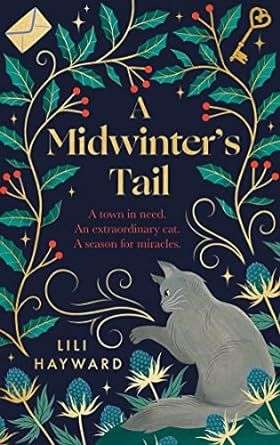A Midwinter’s Tail by Lili Hayward
Sphere, hardback, £14.99
Reviewed by Rima Devereaux

Peppered with tales from Cornish folklore, this evocative novel is set on the tiny island of Morgelyn, a fictional part of the Isles of Scilly. The narrative follows Mina Kestle as she unravels the mystery of a letter from her godfather, Davy Penhallow, who lives on Morgelyn, but pulling her back to London is her job and a key presentation she is scheduled to give in a few days’ time. Her sketchy memories of an idyllic couple of months spent in her godfather’s cottage on the island as a child with her now deceased mother, together with her slow discovery of who can – and cannot – be trusted among the island’s contemporary inhabitants, compel her to stay longer than she had planned.
Lili Hayward is a cat lover from the West Country, and these are two attributes that are at the heart of her story. Davy’s strange cat, Murr, is a constant presence in the book as she gazes knowingly at Mina and conveys a veiled power. The connection between Murr and the woman Morgelyn, after whom the island is named, is set out in the Prologue and hinted at throughout – these are the novel’s only fantasy elements as such, and while they are essential to the tale’s impact, are mainly kept on the level of suggestion and allusion. More apparent in the book are the various tales from Cornish myths, which vie with Mina’s vague memories of her childhood on the island to lend density and magic to the author’s descriptions of the cottage and its surroundings. But the book operates on another level as well, that of a feel-good contemporary story of overcoming adversity and discovering a more rural life.
I appreciated these different levels on which the novel can be read, as well as the author’s beautifully poetic and allusive writing style. Hayward’s deep sense of place resonates powerfully throughout the book’s pages, as with just a few well-chosen words, she paints a picture of the emotion with which landscape can be charged in the observer’s eye. This is another strength of A Midwinter’s Tail: the strongly articulated theme of the relationship between people and land, which is such a key part of much fantasy.
In summary, this book is perfect for those who enjoy experiencing how fantasy themes can enhance a tale about folklore, rural communities and the natural world. I recommend it highly: its magic remains in the memory long after it has been put down.
